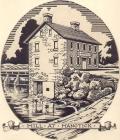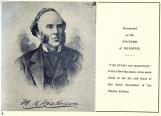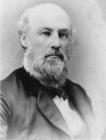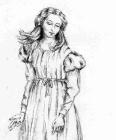1
The Community Memories Project was initiated in 2007, on the eve of Manotick's 150th anniversary in 2009. Community members joined forces with Watson's Mill staff to create a snapshot of life in their much-loved village, and record memories of a bygone era by interviewing long-time residents of Manotick and in so doing, find out just what the Watson's Mill meant to them throughout the years.6
After his death, Dickinson's children ran the mill until 1929, when they sold it to Alex Spratt.1930's
Watson's Mill, Manotick, Ontario, Canada

8
The Working Men of the Mill and their FamiliesEmployment at the Mill:
Due to the fact that the milling process was automated, not many employees were required at the mill. The main employee of the mill was the miller. He was responsible for grinding the flour for the customers, ensuring the mill was in working order, chipping the ice off the walls of the mill during the winter months, oiling the gears and shafts, and overseeing the entire milling process. An apprentice miller would also have worked in the mill learning the trade.
Family Names Associated with the Mill:
Dickinson, Moss Kent: Owner (1860-1926) and builder of the mill; founder of Manotick.
Currier, Joseph Merrill: Partner of Dickinson and builder of the mill
Langrell, Tom: Original mason for the mill
O'Conner, Owen: Original mechanic who installed all the mill equipment
Crosby, Ann: Wife of Joseph Currier who was killed in the mill
Spratt, Aleck: Owner of the mill (1926-1946)
Watson, Harry: Owner of the mill (1946-1972)
Village Life:
The Dickinson enterprise in Manotick grew rapidly. There was a sawmill with planing and shingle machines, a gristmill, and a wool and carding mill located by the dam. There were also sheds and carriage houses for the farmers horses while they waited for their goods. Dickinson opened the M.K. Dickinson's General Trading and Manufacturing Depot and Farmers Exchange in his newly built home in 1868. The home, which now stands across from the mill, also served as the village's first post office.
By 1880, the population of Manotick was about 400. The Beldon Atlas had described Manotick as "the most flourishing and prosperous village in the County of Carleton." There were about 100 residences, five general stores, four wagon shops, one drug store, one school, three churches, five blacksmith shops, a cabinet carpenter, a tailor, a shoe shop, and a tin and harness shop.
The men and their families that worked at the various mills and shops in the area lived in the village. Dickinson's holdings were in a large circle around the mills, on either side of the back channel of the river. The villagers were impressed with Dickinson and felt that under his guidance and influence there would be job opportunities and prosperity. Many visitors to the area commented on the high quality of life of Manotick residents.




